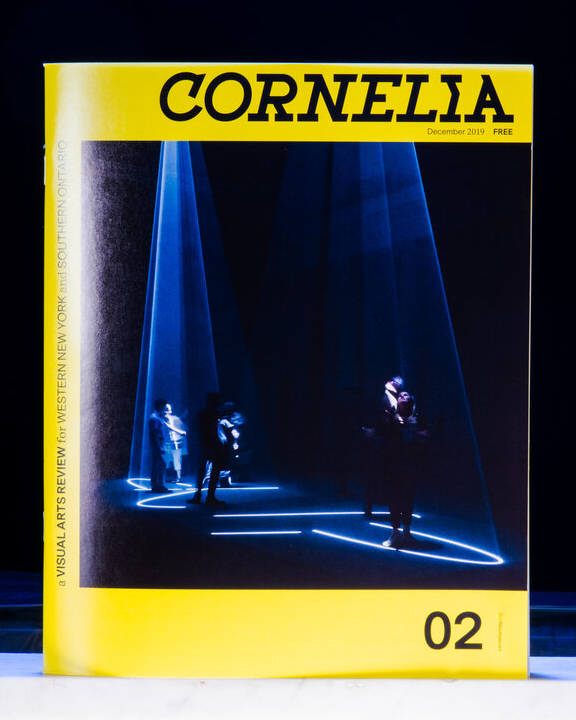Letter from the Editor
Editor: Nando Alvarez-Perez
As we approach the end of 2019, there are days when it feels like the past is popping all the buttons of the surface of the present, popping shockingly into view, and reminding us that it’s just not done with us yet. Artists—situated as they so often are at the paradoxical junctures of economic precarity and monumental wealth, radical diversity and institutional exclusion, creative regionalism and market globalism—are well-attuned to the burning friction of our contemporary moment and the now familiar feeling that none of this will hold. So it may be no surprise that the projects addressed in this second issue of Cornelia are preoccupied with the wages of history and how we might shape a more just, equitable, and imaginative future.
In our Features section, Dana Tyrell takes a look at the most recent iteration of Rochester’s small-venue biennial, Current Scene, where he finds as much focus on the city and the many issues its residents face—displacement, development, and gentrification—as on the visual art exhibited. Emily Mangione, writing about the inaugural Toronto Biennial of Art and building on ideas from artist Mierle Laderman Ukeles’s Manifesto for Maintenance Art, makes a bold claim for why what we need now is a “Reparations Art.” Rounding out the section is a new photo feature, “Q For You,” in which artists mine their studios for objects that spark inspiration or comfort.
In our Piecemeals, Russell Facemire writes about power dynamics in Marlene McCarty’s exhibition Into the Weeds at UB’s Center for the Arts, and William Brereton considers the speculative dystopian sculpture of Adrian Villar- Rojas, recently on view at the AGO. In the Exhibition Reviews, we are so excited to welcome Colin Dabkowski, a former arts writer at The Buffalo News, back into the arts-writing fray with a review of Caitlin Cass’s decade-long, subscription-based comic project, Great Moments in Western Civilization Postal Constituent, recently on view at WNYBAC in Buffalo. Finally, in an interview with Tina Rivers Ryan, Emily Reynolds digs into what first got the Albright-Knox curator excited about art history as well as the complexities of being a curator, art critic, and new mom. And there’s so much more.
In these pages we are capturing an incomplete snapshot of history in the making through significant moments in our region: two new biennials, the final exhibition in the Albright-Knox’s current buildings, and a boom of compelling shows at venues throughout the area. So while it feels like 2020 might be a bit of a bumpy ride, we think there are plenty of reasons to stay optimistic and excited.


